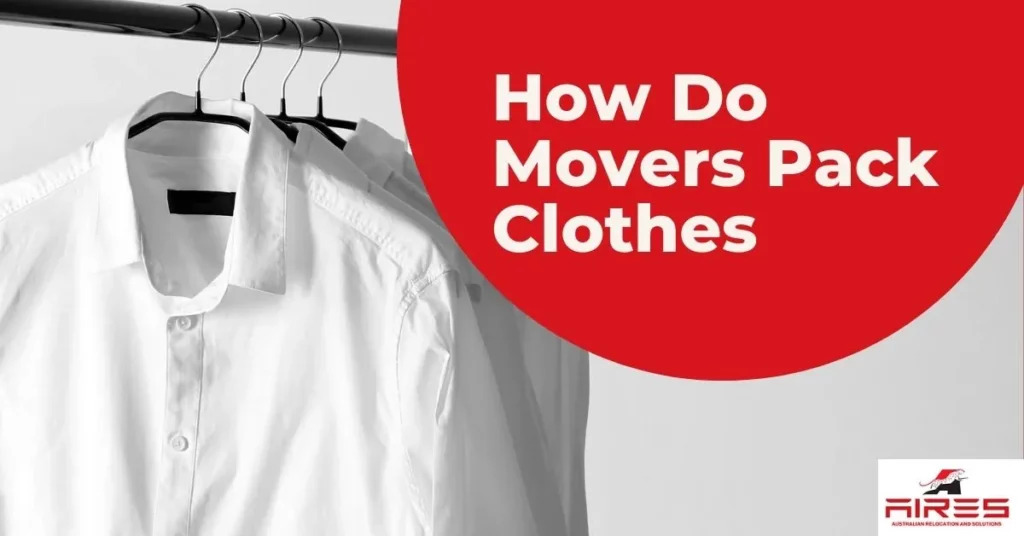How Do Movers Pack Clothes
Relocation may be a stressful experience, especially when it comes to moving your belongings. Ensuring your garments remain organized, clean, and wrinkle-free during the move requires careful planning and execution. This guide takes you through how professional movers expertly pack clothes to ensure a smooth transition to your new home.
Introduction
Moving can be a chaotic experience, but with proper planning, you can simplify the process. Packing your clothes efficiently is crucial to ensure they arrive at your new destination in pristine condition. Following a few essential steps can make the moving process less stressful and more organized.
Gathering Packing Supplies
Before you begin packing, gather all the necessary supplies. You’ll need sturdy boxes, packing paper, bubble wrap, tape, markers, and wardrobe boxes. These items will help streamline the packing process and protect your clothes during transit.
Sorting and Decluttering
Moving provides the perfect opportunity to declutter your wardrobe. Sort through your clothes and separate items you no longer wear or need. Consider donating, selling, or discarding these items. This reduces the number of items to pack and ensures a fresh start in your new home.
Categorizing Clothing Items
Categorize your clothes based on their type and material. This makes unpacking and organizing easier later on. Group similar items, such as shirts, pants, dresses, and jackets. This step also helps you determine the appropriate packing method for each category.
Choosing the Right Packing Method
Different types of clothing require specific packing methods. For delicate fabrics, use tissue paper to prevent wrinkles. For bulkier items, rolling clothes can save space. When packing shoes, wrap them in paper to protect them from scuffs and scratches.
Folding and Wrapping Techniques
Fold your clothes neatly to conserve space and minimize wrinkles. For button-down shirts and dresses, fasten the buttons to maintain their shape. Delicate fabrics like silk should be wrapped in tissue paper before folding to prevent friction and potential damage.
Packing Non-Hanging Clothes
Most of your clothes can be packed in boxes. Wrapping paper should be applied to cover the bottom of the packaging for additional safety. Fold and place clothes inside, filling gaps with more paper to prevent shifting during transit.
Packing Hanging Clothes
Hanging clothes can be packed in wardrobe boxes. These boxes come with a hanging rod to transfer clothes directly from your closet. Place several hanging garments on hangers and cover them with a plastic bag or garment cover. Hang them inside the wardrobe box and fill the bottom with folded clothes.
Utilizing Wardrobe Boxes
Wardrobe boxes are a game-changer for moving clothes. They keep your garments hanging and minimize wrinkling. Additionally, they provide extra space at the bottom for packing shoes, accessories, and folded clothes.
Labeling and Organizing Boxes
Labeling each box is essential for easy unpacking. Write a brief overview of its contents as well as the room to which it belongs. This will save you time and effort when setting up your new home. Keep similar items together to maintain organization.
Special Care for Delicate Fabrics
Delicate fabrics like silk, satin, or lace require special attention. Wrap them individually in tissue paper and label the box as fragile. Place these boxes on top to avoid crushing them under heavier items.
Maximizing Space Efficiency
Space is valuable during a move. Utilize every inch of space in your boxes by filling gaps with smaller items like socks, scarves, or belts. This saves space and ensures that items don’t shift during transportation.
Unpacking and Arranging
When you arrive at your new home, start by unpacking the essentials. Hang your clothes in the closet first, followed by unpacking folded items. This way, you can establish a sense of order quickly.
Dealing with Post-Move Wrinkles
Despite your best efforts, some clothes might still wrinkle during the move. Hang wrinkled items in the bathroom while you take a hot shower—the steam will help release wrinkles. Alternatively, use a fabric steamer for a quick touch-up.
Conclusion
Packing clothes for a move requires careful consideration and planning. By following this professional advice, you can ensure that the clothes arrive in perfect condition at the place of your choice. Remember, proper organization and the correct packing methods can make all the difference in simplifying your moving process.

